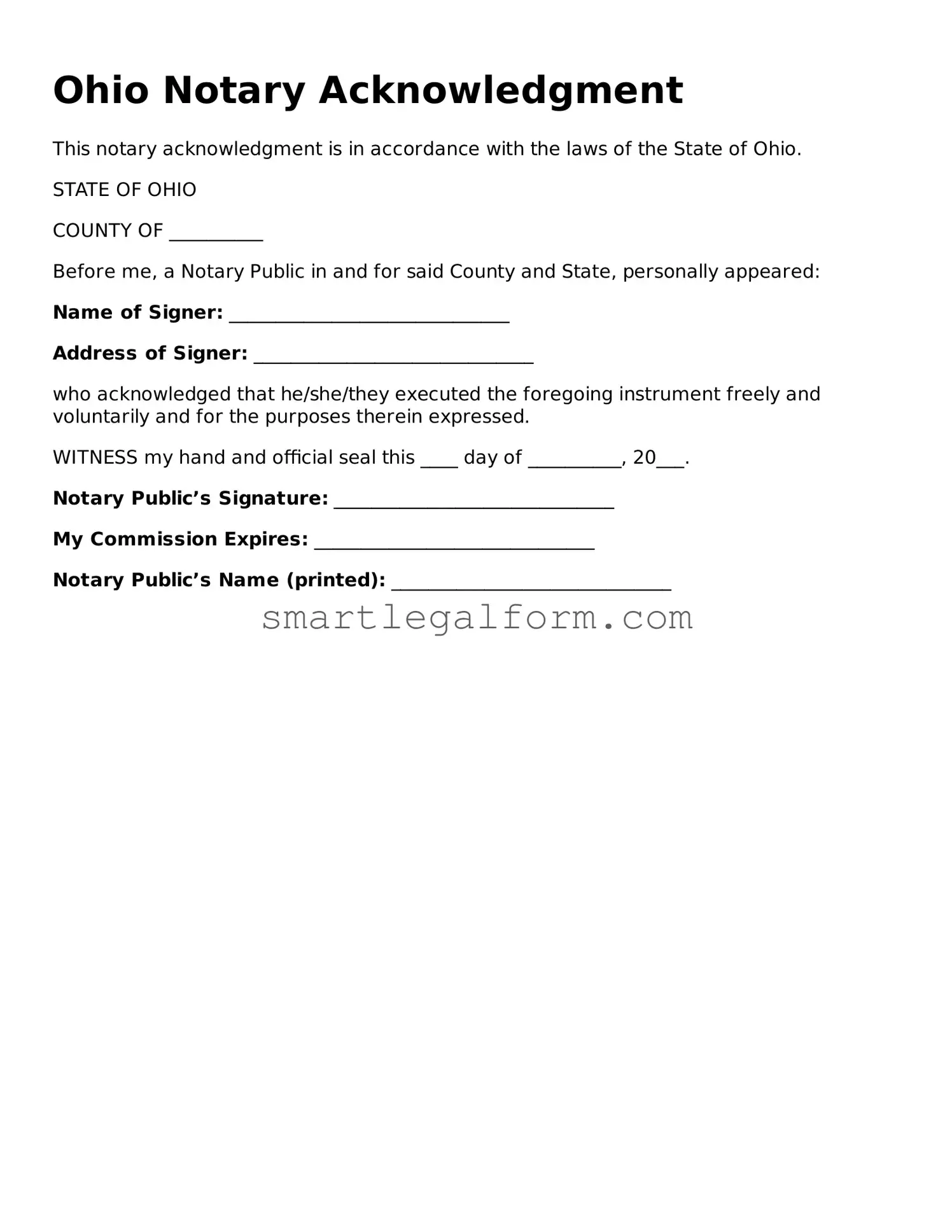Filling out the Ohio Notary Acknowledgement form can be straightforward, yet many individuals encounter pitfalls that can lead to complications. One common mistake is failing to include the correct date of the acknowledgment. This date is crucial as it establishes when the notary performed their duty. Omitting or incorrectly entering this information can create confusion and may invalidate the document.
Another frequent error is neglecting to sign the form in the appropriate section. The individual whose signature is being notarized must sign in the presence of the notary. If this step is overlooked, the notary cannot complete the acknowledgment, rendering the document ineffective.
Additionally, some people mistakenly believe that any signature on the form is sufficient. However, the notary must verify that the signature belongs to the person present. Failing to ensure the identity of the signer can lead to legal challenges down the line.
Inaccurate information about the signer can also lead to issues. For instance, providing an incorrect name or failing to include the signer’s full legal name can cause problems. The notary must ensure that the name on the form matches the identification provided by the signer.
Another mistake involves the notary's seal. The seal must be clear and legible. If the seal is smudged or not properly affixed, it may not meet the requirements for a valid acknowledgment. Ensuring that the seal is correctly placed is essential for the document's acceptance.
People often overlook the requirement for the notary to include their commission expiration date. This date is a critical part of the acknowledgment. Without it, the document may be deemed incomplete or invalid.
Some individuals fail to provide the correct venue. The acknowledgment must specify where the notarization took place. Omitting this detail can lead to questions about the document's legitimacy.
In addition, notaries must be careful about their own information. Errors in the notary's name or commission number can create problems. Accurate documentation is vital to maintain the integrity of the notarization process.
Another common oversight is not checking for additional requirements specific to certain documents. Some legal documents may have particular stipulations regarding notarization that must be adhered to. Ignoring these details can lead to complications.
Lastly, people sometimes do not retain a copy of the completed acknowledgment. Keeping a record is essential for future reference. Without a copy, it may be challenging to prove that the notarization occurred, should questions arise later.
